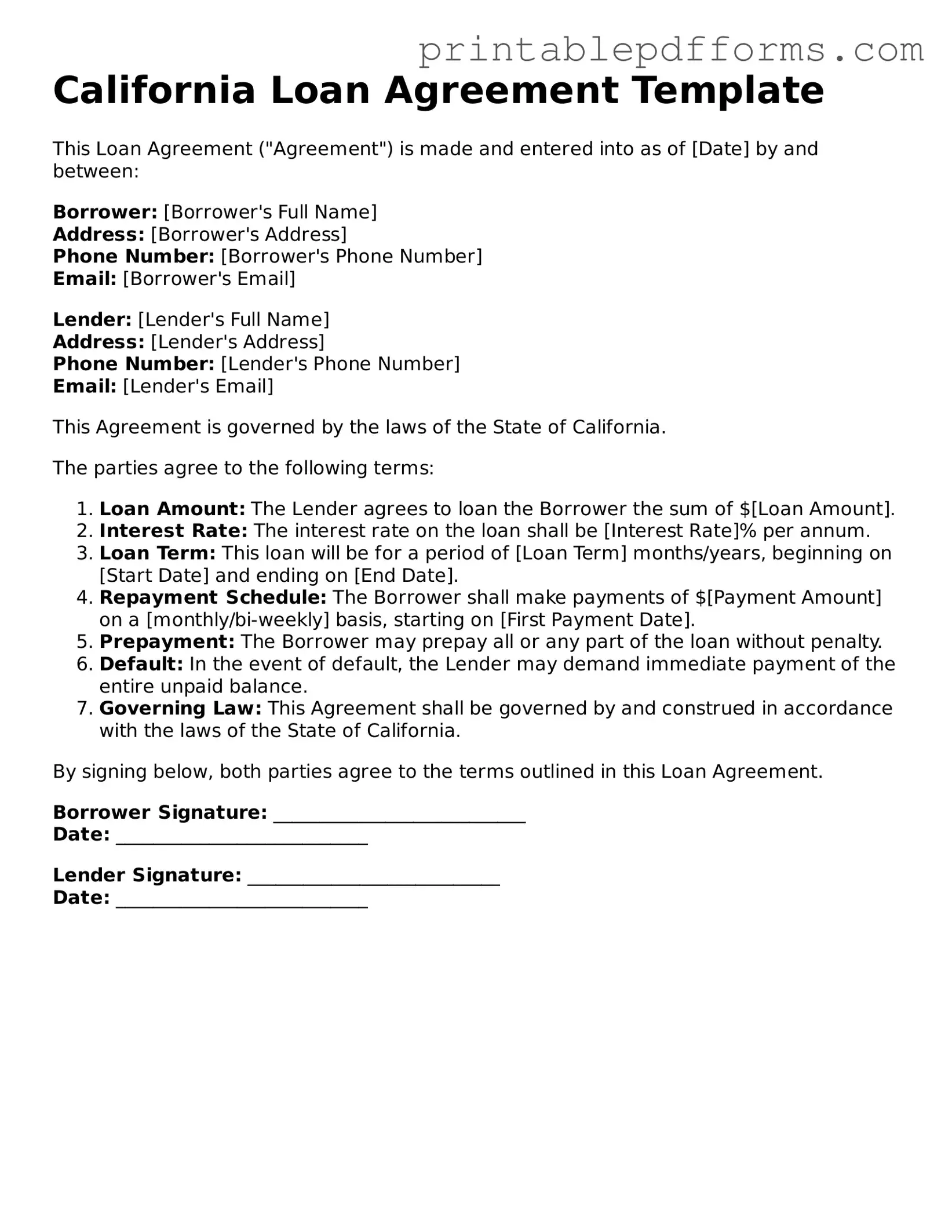A California Loan Agreement form is a legal document that outlines the terms and conditions of a loan between a borrower and a lender. It details the amount borrowed, the interest rate, repayment schedule, and any other relevant terms. This form ensures that both parties understand their rights and obligations, helping to prevent disputes down the line.
Who needs a Loan Agreement?
Anyone who is lending or borrowing money in California should consider using a Loan Agreement. This includes individuals, businesses, and organizations. Having a written agreement protects both parties by clearly stating the terms of the loan and can be especially important for larger amounts of money.
What should be included in a California Loan Agreement?
A comprehensive California Loan Agreement should include the following key elements:
-
The names and addresses of the borrower and lender
-
The loan amount
-
The interest rate
-
The repayment schedule
-
Any collateral securing the loan
-
Default terms and conditions
-
Governing law (California law)
Is it necessary to have the Loan Agreement notarized?
While it is not legally required to notarize a Loan Agreement in California, doing so can add an extra layer of security. Notarization can help verify the identities of the parties involved and ensure that they are entering into the agreement willingly. This can be particularly useful if disputes arise later.
What happens if the borrower defaults on the loan?
If the borrower fails to repay the loan as agreed, the lender has several options. The Loan Agreement should specify the consequences of default, which may include:
-
Late fees
-
Acceleration of the loan (demanding full repayment immediately)
-
Legal action to recover the owed amount
It's important for both parties to understand these terms before signing the agreement.
Can a Loan Agreement be modified after it's signed?
Yes, a Loan Agreement can be modified after it is signed, but both parties must agree to the changes. Any modifications should be documented in writing and signed by both the borrower and the lender to ensure clarity and enforceability.
What is the difference between secured and unsecured loans?
A secured loan is backed by collateral, meaning the borrower pledges an asset (like a car or property) that the lender can claim if the loan is not repaid. An unsecured loan does not require collateral, relying instead on the borrower's creditworthiness. Secured loans often have lower interest rates due to the reduced risk for the lender.
Can I use a California Loan Agreement for business loans?
Absolutely! A California Loan Agreement can be used for both personal and business loans. When drafting a business loan agreement, it’s important to include specific terms related to the business context, such as the purpose of the loan and any relevant business information.
Where can I find a template for a California Loan Agreement?
Templates for California Loan Agreements can be found online through various legal websites, or you may consider consulting with a legal professional to ensure that the agreement meets your specific needs. Using a template can save time, but it’s crucial to customize it to reflect the unique terms of your loan.
What should I do if I have more questions about Loan Agreements?
If you have additional questions or need assistance with a Loan Agreement, consider reaching out to a legal professional. They can provide tailored advice based on your specific situation and ensure that your agreement complies with California laws.
